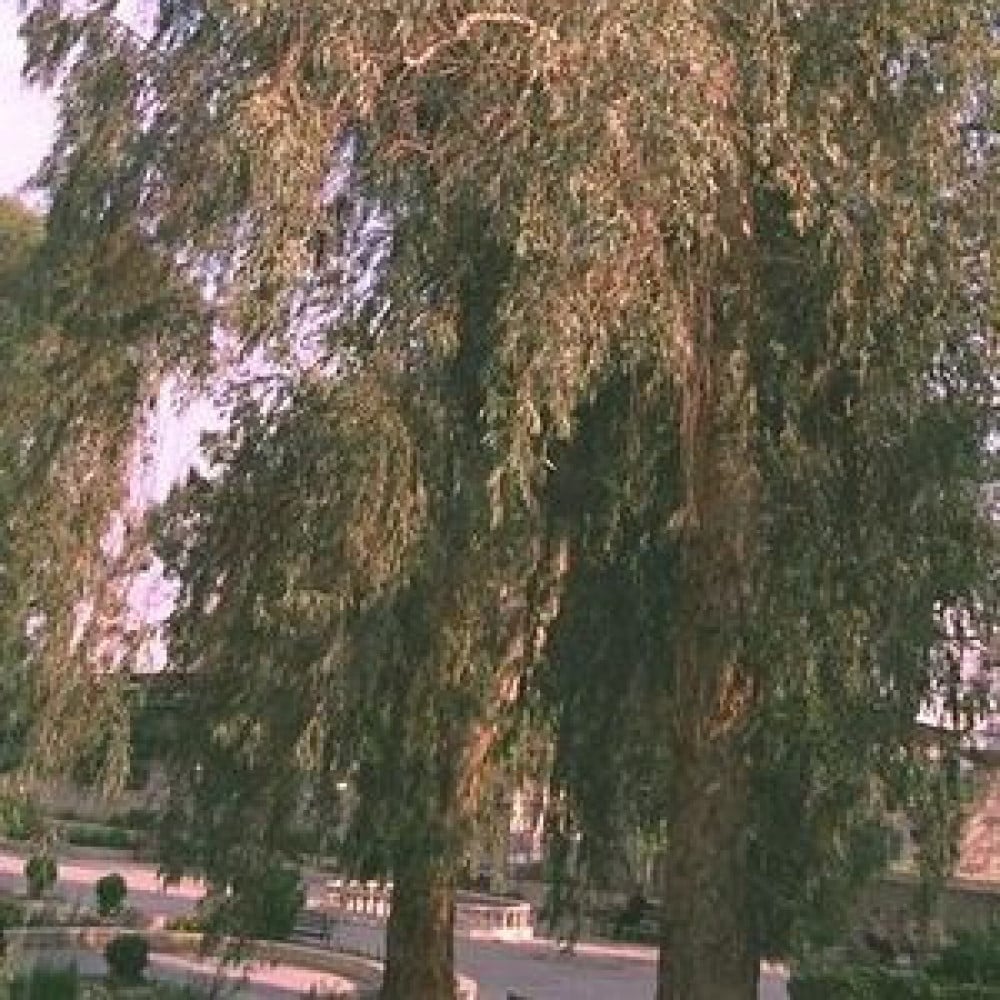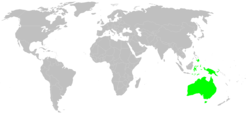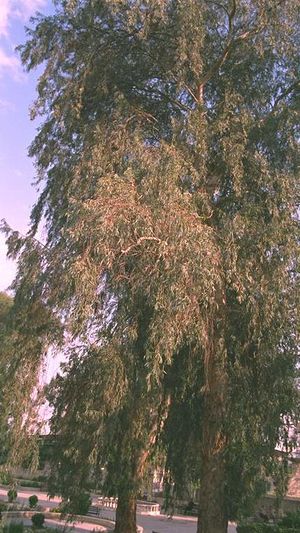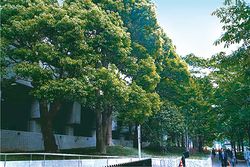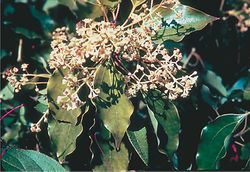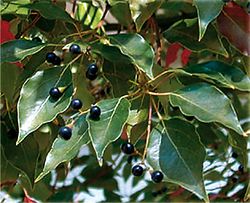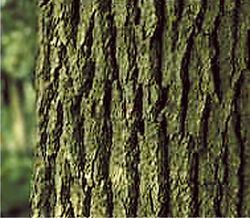a
Camphor tree
Eucalyptus or Eucalyptus in English: Eucalyptus of the Lauraceae family. Eucalyptus leaves are used in asthma, cough, pulmonary congestion, as an expectorant , and antibacterial, such as bacteria and viruses. The oil is useful in cleansing the airways, airway, and skin infection.
The eucalyptus plant is an evergreen tree with a wide trunk and many branches covered with long leaves. When rubbed by hand, it emits a scent that refreshes the breath resulting from the emission of eucalyptus oil. The steam of boiled eucalyptus water is beneficial for those with a cold . Its flowers are white, light yellow in color, and its ripe fruits are small, black in color, the size of a pea (Fig. 1). Its leaves are ovoid in shape, alternating (3-10 cm) hanging from its long petioles, dark green in color on its upper side and pale green in color on its lower side. It smells of camphor when rubbed. Its different parcels are green in color with a slight reddish tinge to it.
Eucalyptus trees are planted as windbreaks, and the wood of the eucalyptus tree is unsuitable for carpentry and furniture making.
Camphor trees are large trees that may reach a height of more than 50 meters. Their height reaches about 15-46 meters. Live about 45-50 years and more. It is distinguished by the large and thick stems, which reach a diameter of 0.5 to 1 meter. The leaves are simple petiolate, lanceolate or oval in shape, with a smooth edge and a thick leathery texture. The flowers are small in size, yellow or gray in color, and are found in clusters. The fruits are capsule-shaped and small in size.
Eucalyptus is the most common tree species in Australia. This name is derived from the Greek word meaning completely covered, referring to the shape of the fruit. Australians call eucalyptus gum trees, because the fruits secrete a sticky resinous gum, yet people use this name, especially for eucalyptus with smooth bark, and it is called in Egypt and some Arab countries camphor.
Eucalyptus is a large genus, with more than 600 species. It is native to Australia, but a few of it grows naturally in the Philippines, Malaysia, and the Pacific islands, especially the island of Taiwan, where the Taiwanese aromatic camphor Dryobalanops camphora forms real forests on its mountains; Its wood is used in the production of Taiwanese borneo camphor. Today, camphor forests are also spread over large areas in areas extending from southern Japan to Vietnam, and its cultivation is spread in Australia, California and Florida due to its industrial, economic and agricultural importance, and in the manufacture of furniture and drilling. Some American boys and girls still carry around their necks collars carrying small dangling bags containing camphor, as a protection against cold, or against physical ailment, or against psychological anxiety.
More than 200 species of eucalyptus have been cultivated in other countries, because it is a fast-growing, drought-tolerant wood tree. Eucalyptus is now a popular feature in landscaping in the USA, Portugal, East Africa, and parts of what was then the Soviet Union, on the Black Sea coast. Common types in western Europe include blue gum and cedar gum in Tasmania, the latter having its name from the scent of its leaves when rubbed. Eucalyptus trees are also planted in parks and gardens all over the world, for the beauty of their vegetation, flowers and seeds.
Eucalyptus trees dominate landscapes in continental Australia and Tasmania. But it is less inland and in rainforests.

